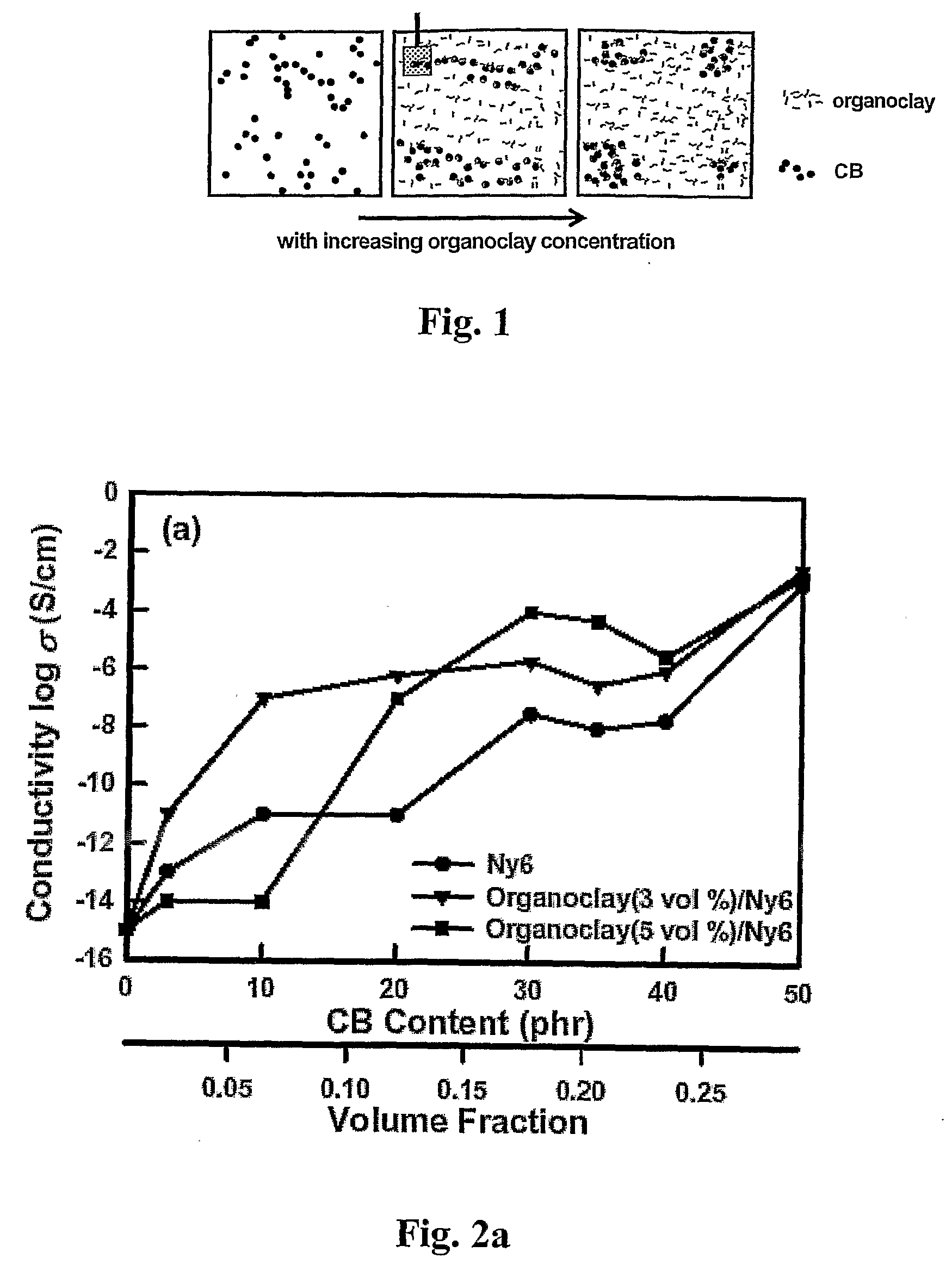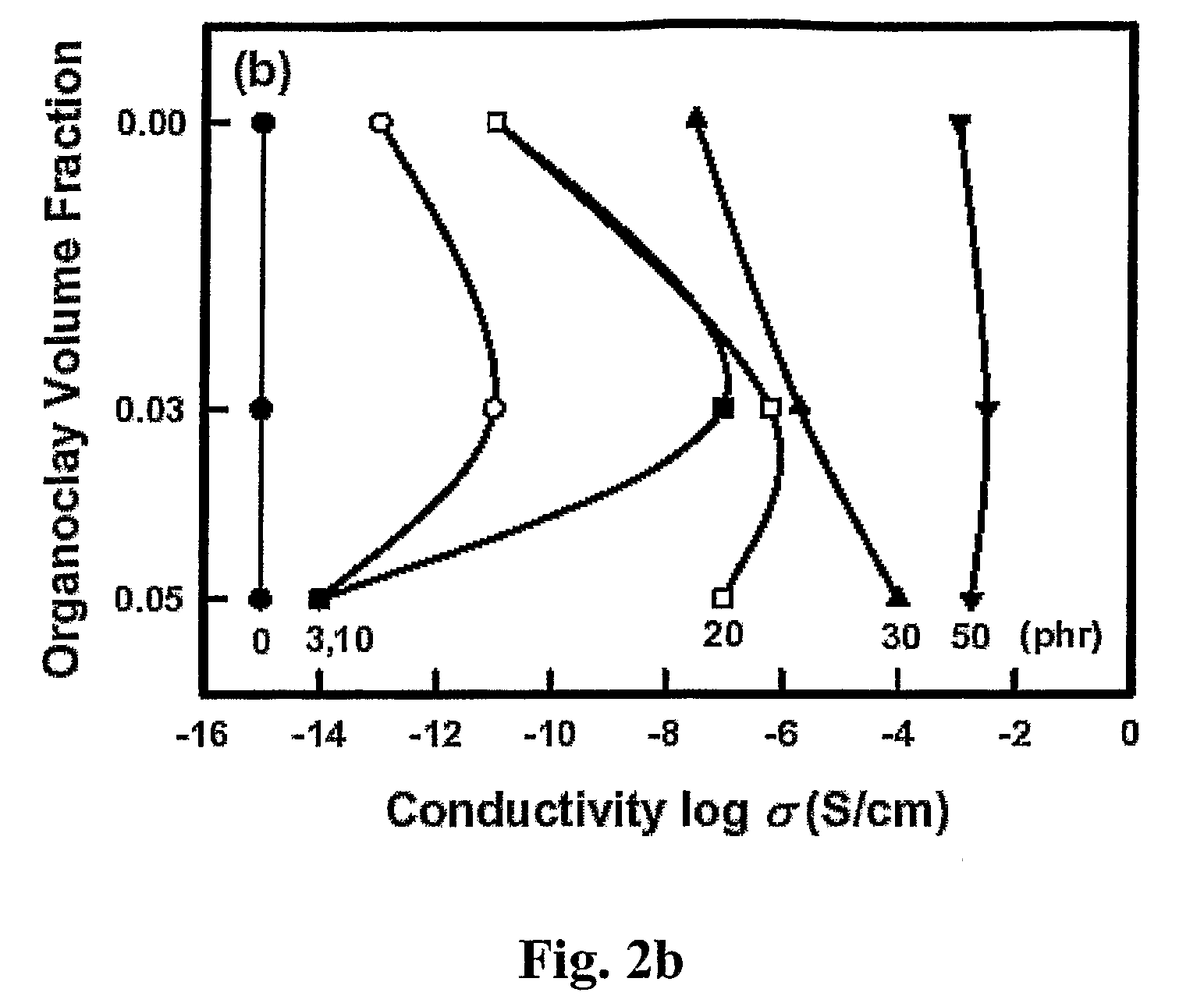Electrically-Conducting Polymers, a Method for Preparing Electrically-Conducting Polymers, and a Method for Controlling Electrical Conductivity of Polymers
a technology of electrical conductivity and polymerization method, which is applied in the field of polymer materials, can solve the problems of difficult precise control of electrical conductivity, small concentration of conductive components, and damage to electronic devices, so as to minimize the sensitivity of electrical conductivity
- Summary
- Abstract
- Description
- Claims
- Application Information
AI Technical Summary
Benefits of technology
Problems solved by technology
Method used
Image
Examples
Embodiment Construction
[0040]Percolation theory is well known to describe varying numbers of connections in a random network. Take for example, an array of holes on a substrate. Small electrically conductive particles are deposited randomly onto the substrate and can only reside in the holes formed in the substrate. Electrical conduction can occur between these particles located in adjacent holes because the conductive particles in the adjacent holes are close enough to allow the transfer of electrons, and accordingly, conduction to occur. Groups of adjacent conductive particles can accumulate into clusters, which can grow as metal particles are deposited onto the substrate. Eventually, clusters can extend from one terminus of the substrate to another terminus, forming a continuous conductive path across the substrate referred to as a spanning cluster. Conduction does not occur across the substrate until at least a minimal number of conductive particles has been deposited to span the substrate. However, t...
PUM
| Property | Measurement | Unit |
|---|---|---|
| diameters | aaaaa | aaaaa |
| length | aaaaa | aaaaa |
| specific surface area | aaaaa | aaaaa |
Abstract
Description
Claims
Application Information
 Login to View More
Login to View More - R&D
- Intellectual Property
- Life Sciences
- Materials
- Tech Scout
- Unparalleled Data Quality
- Higher Quality Content
- 60% Fewer Hallucinations
Browse by: Latest US Patents, China's latest patents, Technical Efficacy Thesaurus, Application Domain, Technology Topic, Popular Technical Reports.
© 2025 PatSnap. All rights reserved.Legal|Privacy policy|Modern Slavery Act Transparency Statement|Sitemap|About US| Contact US: help@patsnap.com



